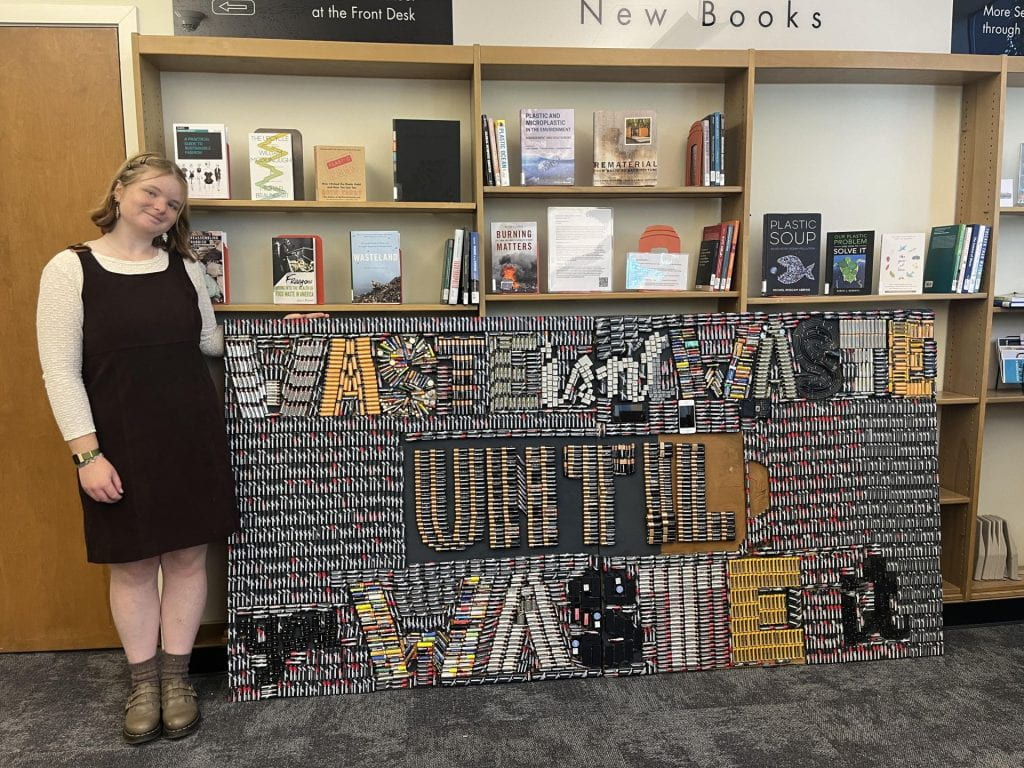guest post by Lauren Crane ’26
Newly installed at Gleeson, adjacent to the Seed Library, there’s a mosaic made entirely from e-waste collected around USF’s campus from Spring 2023 to Spring 2024.Featuring dead batteries, empty ink cartridges, broken chords, old phones, and more, this eclectic collection of waste has been arranged to awaken viewers to the sheer volume of e-waste that is generated and the potential that trash has to serve new purposes.
Also on display is a collection of books that highlight e-waste, plastic waste, re-use and more.

It’s important to think about what happens to waste once it is thrown away – who knows, maybe it’s being made into an abstract art piece by a college student somewhere. Either way, everyone holds a great power to determine if the waste they generate stays waste or if it can be repurposed, recycled, or even reduced in the first place. Because waste isn’t waste until it’s wasted.
How to interact with this piece
Standing from a few steps back, can you discern all of the letters and words? Viewing from a distance is helpful to understand the importance of the scale of waste generation and to identify the different types of waste featured in the mosaic. But I encourage you to get up close! Look at the different battery brands and designs of each battery. Notice how batteries are corroding. Are there any forms of waste on the piece that you don’t recognize? Think about the different types of waste you’ve discarded. Do you know where they ended up?
This piece isn’t meant to blame the individual or even the collective for the production of e-waste. Rather, consider the things you consider waste or what you throw away, e-waste included. Are there ways to repurpose those items or perhaps change your relationship with them to be more sustainably-oriented?
What Comes Next
If you’re interested in learning about pathways for e-waste disposal in San Francisco, check out the Office of Sustainability blog post. E-waste disposal looks different in every region, so stay sensitive to that; however, the blog post is a great place to start.
If this mosaic sparks an interest in how to reduce usage of single-use items, like batteries, there are plenty of pathways to explore. Consider rechargeable batteries for example!
Finally, if you have any questions or would like to contact the artist, feel free to email sustainability@usfca.edu.
